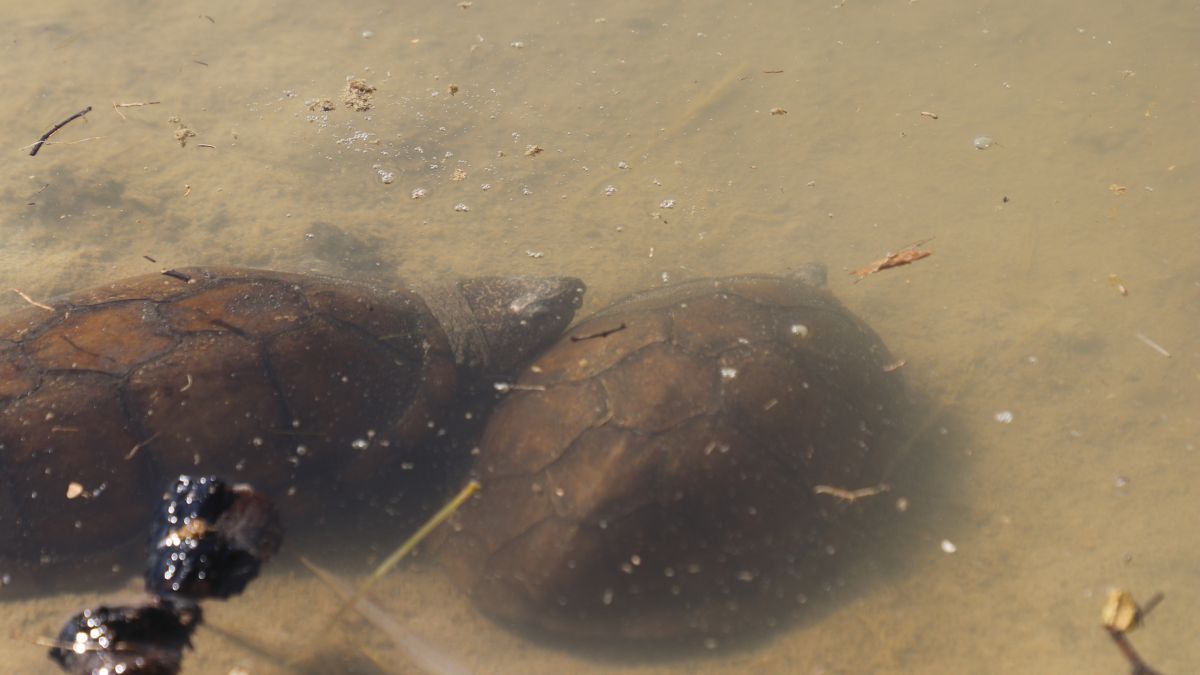SURVEY OF THE ROUGH-FOOTED MUD TURTLE
Project funded by Texas Parks and Wildlife Department
The rough-footed mud turtle (Kinosternon hirtipes murrayi) is the rarest turtle in Texas. It is known from a handful of sites in southern Presidio County and is state-listed as threatened.

Project Details:
The Rough-Footed Mud Turtle (Kinosternon hirtipes) is highly aquatic and is patchily distributed in natural and human-modified water bodies from Presidio County, Texas to central Mexico. This limited range in Texas makes it the rarest turtle in the United States and it is state listed as threatened by TPWD. However, we know relatively little about the conservation and taxonomic status of Texas populations and, given the small range and low number of known populations, there appear to many low-hanging fruit in terms of hands-on management, beginning with data collection and analysis.
In 2018, the Center for Conservation & Research at San Antonio Zoo received funding from Texas Parks and Wildlife Department to conduct a range-wide genetic analysis of the species, including all five extant subspecies, as well as niche and climate modeling, and population genetics of discrete populations and lineages. We collaborated with researchers from the University of Minnesota and Universidad Nacional Autonoma de Mexico en Morelia. To gather and analyze DNA from over 180 blood, bone, and tissue samples using cutting-edge whole-genome sequencing and extensive bioinformatics. We found that northern populations (Texas + Chihuahua) are distantly related to southern populations and that the genetic diversity of northern populations is poor. Simple habitat management to protect and preserve native riparian communities and other small-scale, boots-on-the-ground efforts could ensure a bright future for this species in Texas.
In 2022, we received another grant from TPWD to conduct surveys using environmental DNA (eDNA) sampling. This approach involves filtering free-floating DNA from a few liters of water and then using custom primers to detect the presence of the target species. Our collaborators from UT Rio Grande Valley and The University of New Mexico are pioneers in the use of eDNA to detect freshwater turtles and amphibians in Texas. At sites where we detect the presence of turtles via eDNA, we will deploy traditional hand-capture and trapping techniques to collect small tissue samples and take measurements of each individual turtle encountered. These DNA samples and habitat, locational data will be added to our existing dataset and used to refine our ecological niche models.
So far, we have collected dozens of eDNA samples from sites in Texas and Mexico as well as genetic samples from previously unsampled populations in Mexico. We detected the presence of Kinosternon hirtipes DNA at several sites in Texas within and outside its hypothetical distribution as well as outside the estimated climate niche for the species. Future sampling efforts will focus on the collection of genetic material in Texas and Mexico. These samples will be used to examine population genetics and phylogenetic relationships within the taxon.
A link to our paper describing this work can be found here: https://doi.org/10.1093/jhered/esac036